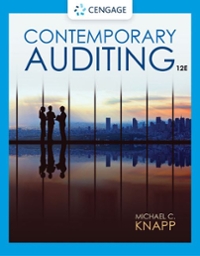Question
Hancock Brothers, another Wall Street investment bank, engaged in so-called Repo 105 transactions, by which Hancock was able to move liabilities off its balance sheet
Hancock Brothers, another Wall Street investment bank, engaged in so-called "Repo 105 transactions," by which Hancock was able to move liabilities off its balance sheet at the end of each quarter over a period of years. A "repo," or repurchase transaction, is a two-step transaction that may be used to obtain short-term funding. In the first step, the entity needing funds transfers securities or other assets to a counter-party in exchange for cash, while at the same time agreeing to repurchase the transferred assets at a future date for an amount equal to the cash exchanged plus an agreed-upon charge. In the second stage, the transferor pays the counter-party the original cash amount plus the agreed-upon interest, and the counter-party returns the originally transferred assets.
A repo is thus like a loan, and, if accounted for properly, does not raise any particular problems. But Hancock's Repo 105 transactions were not accounted for properly. The asset used as collateral in a Repo 105 transaction was treated as though it actually had been sold and, therefore, removed from Hancock's balance sheet. Hancock used the cash received in the first step to pay down other existing liabilities. The effect of this treatment was to lower Hancock's leverage, and thus make the company look financially stronger than it was. Some investors in Hancock brought a securities class action lawsuit against Hancock, alleging that Hancock repeatedly used Repo 105 transactions near the end of its quarterly reporting periods to temporarily remove tens of billions of dollars from its balance sheet, usually for a period of seven to ten days. As Hancock's financial health deteriorated, the amounts of the Repo 105 transactions increased.
Ruling on Hancock's Motion to Dismiss these claims, a federal district court judge stated that the securities fraud claims involved enough red flags to establish an inference of scienter about the misleading character of the Repo 105 transactions, even though Hancock's outside auditor had approved the accounting for them. The court explained that "red flags may exist if the complaint alleges the existence of transactions that were large, recurrent, timed near the end of a reporting period, and obviously lacking in business purpose. This may be true even if the registrant's outside auditor has opined that the company's financial statements were presented in accordance with GAAP."
Your mission:
Assume that you've been retained to evaluate Hancock's arguments for a possible appeal. Assuming that this case has been brought as a class action, analyze the court's ruling in light of Tellabs.
Step by Step Solution
There are 3 Steps involved in it
Step: 1
In the given scenario Hancock Brothers engaged in Repo 105 transactions to temporarily remove liabil...
Get Instant Access to Expert-Tailored Solutions
See step-by-step solutions with expert insights and AI powered tools for academic success
Step: 2

Step: 3

Ace Your Homework with AI
Get the answers you need in no time with our AI-driven, step-by-step assistance
Get Started


